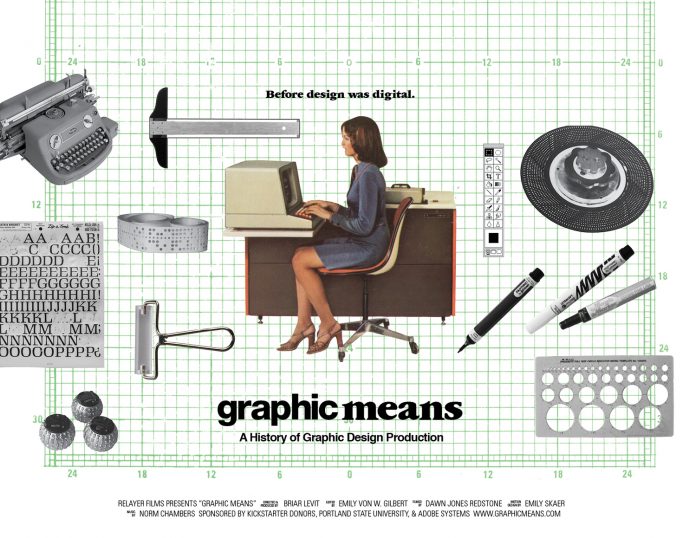Ever wondered how books and magazines were produced before the magical invention of programs like Adobe InDesign or Microsoft Word? It has been decades since the personal computer revolutionized the way the printing and design industries work. But before that, printed material was the result of meticulous preparation by the hands of workers with unmatched skill and precision.
A new documentary, Graphic Means: A History of Graphic Design Production, was screened in room B101 at Abbotsford campus on Tuesday, March 13, and was a fundraising event for the University of the Fraser Valley’s graphic and digital design program. All proceeds from the event will go toward the graphic design program’s grad show in April.
Graphic Means is a brand-new movie released just last April. The film discusses the history of the graphic design industry using rare archival footage and interviews. It did a premiere tour around North America, even stopping in Regina, but it didn’t come close to Vancouver.
This film was made available to educational facilities such as UFV last month. Rika Heywood, a graphic design history instructor in the graphic design program, applied to acquire the film, and UFV received it shortly afterwards. It has been in the library since, but was kept quiet to help ticket sales for the film screening. Now the film is available in DVD format for a seven-day rental from the library to anyone who wishes to see it.
At the entrance to the screening, attendees could snatch up a few remaining last minute tickets. Popcorn, buttons, postcards, and other memorabilia created by graphic design students were available by donation.
What Graphic Means means to do is illustrate how design, as we know it today, came into being. The film tells the history of print, the rise of the agency and corporate design, and the invention and influence of the personal computer. Heywood stated in his opening address to the attendees of screening, that “It is hard to believe, but graphic design used to use your hands, and so this is all about what graphic designers did before computers.”
To briefly summarize the information presented in Graphic Means, graphic design originated thousands of years ago, when people were simply making marks in clay. Since the invention of Gutenberg’s press in 1450, we have made leaps and bounds in printing technology. The invention of the linotype in 1884 shook the industry. Suddenly, books were more readily available, and affordable for the average working person. The real changes began in the newspaper industry, where printing was determined a valuable and hard-earned skill. Then we moved on from hot metal techniques such as the linotype press, to “cold” techniques such as “paste-up,” in which designers prepared a document for printing by cutting and pasting images, text, and shapes onto a page, which was then photographed. It was during this time that women were entering the workforce. Women found their way into this industry quite quickly, despite being paid at precisely half the amount of their male counterparts. Since then, the industry continues to break new ground in technology, design, and equality.
The film concluded by addressing the invention of the personal computer. The invention of the Macintosh completely changed the printing industry. Suddenly, the entire studio was in a computer. Many people think we have lost the same standard of quality since the eradication of hot and cold type printing studios. However, similar beliefs surface with every breakthrough, and the new still ends up replacing the old.
Illuminate, the UFV Graphic Design diploma’s first year’s open house will take place on March 21 from 4:00 to 7:00 p.m. at UFV’s Mission campus, and UFV’s Graphic + Digital Design Portfolio Show will take place April 24 from 4:30 to 7:30 p.m. at Highstreet Mall in Abbotsford.
To witness the trailer of Graphic Means: A History of Graphic Design Production, you can visit http://www.graphicmeans.com/.


